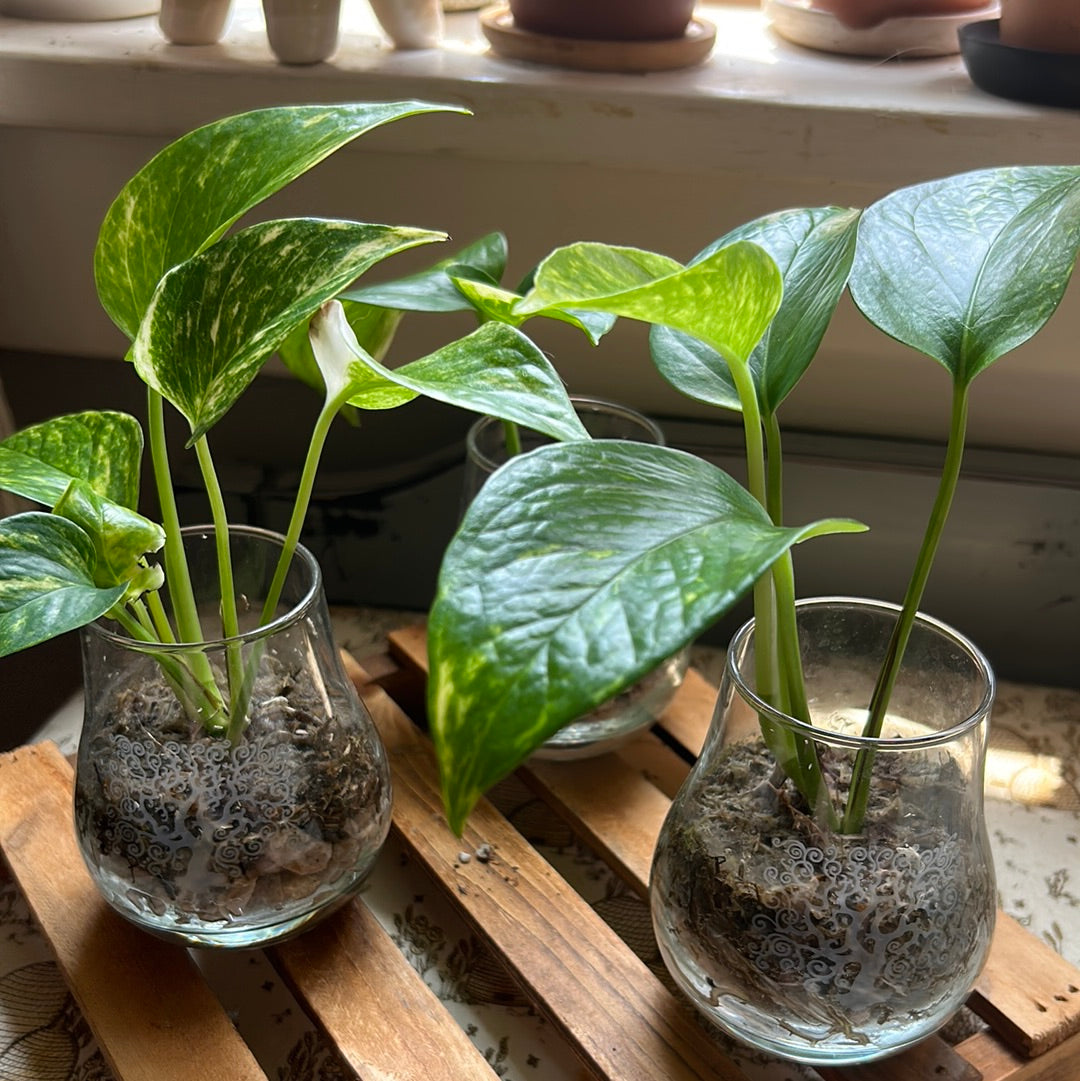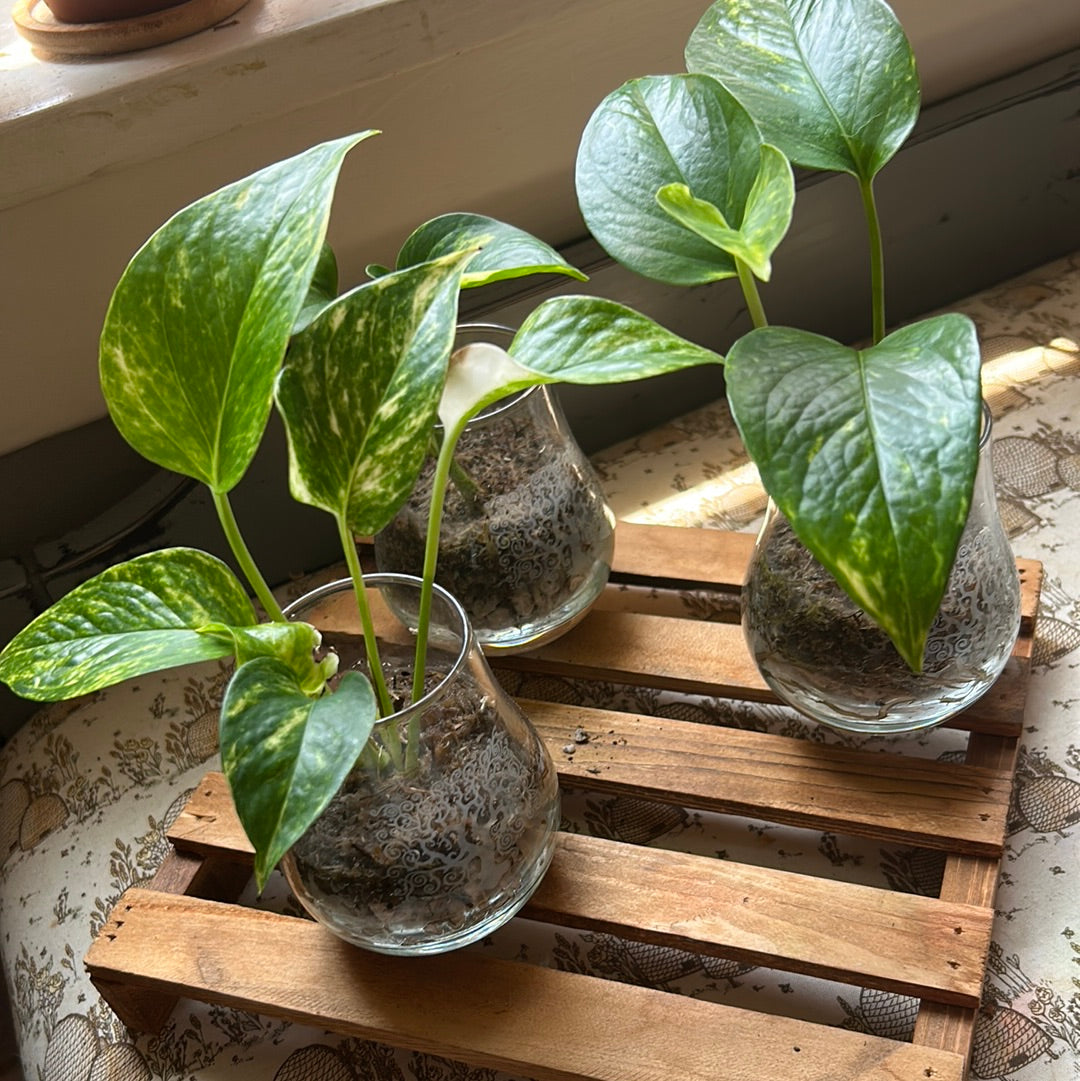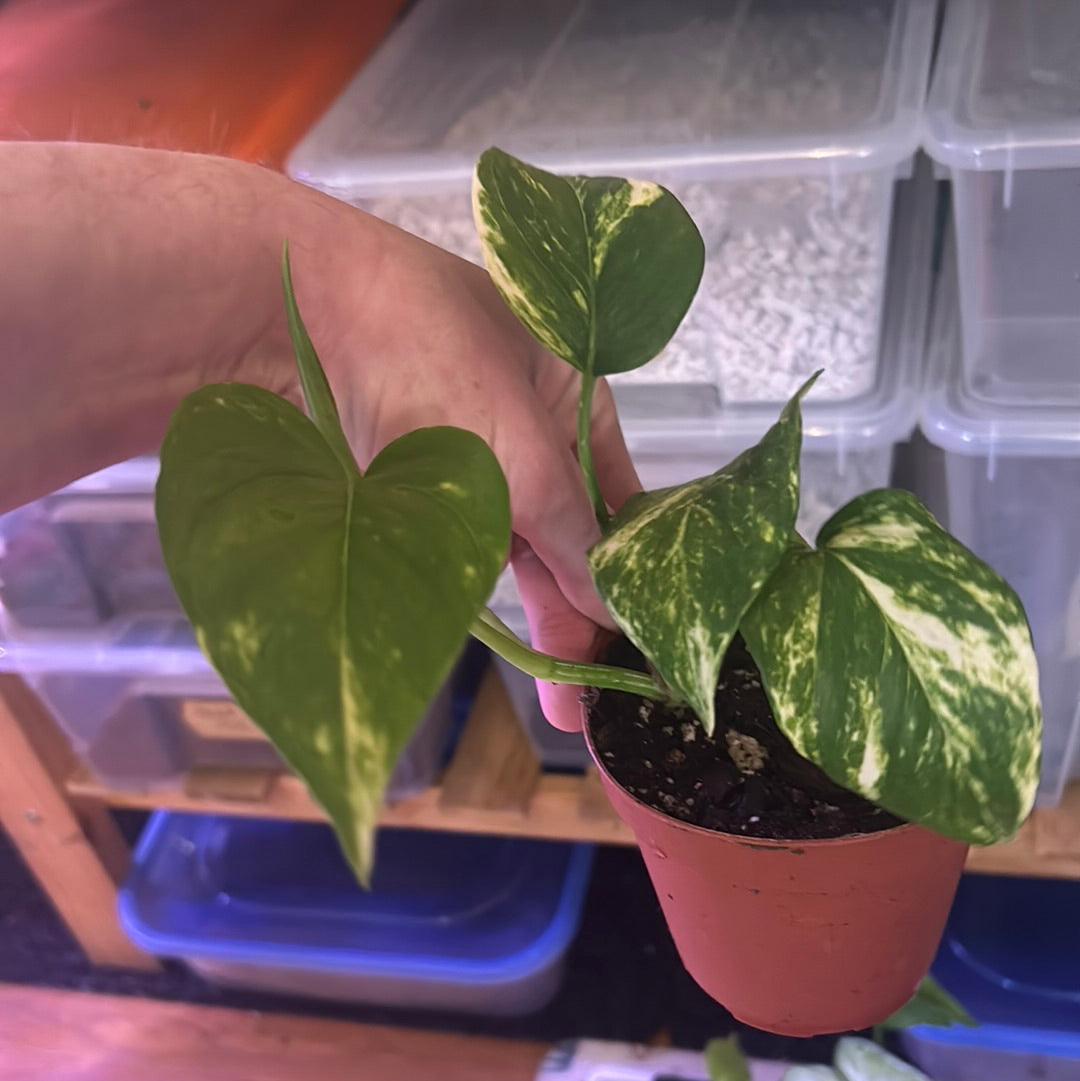Golden Pothos (High Variegation)
Golden Pothos (High Variegation)
Share
Golden Pothos | Epipremnum aureum | Devil’s Ivy
Epipremnum aureum, commonly known as ‘Golden Pothos’ or ‘Devil’s Ivy,’ is a popular and versatile houseplant prized for its trailing vines and heart-shaped, golden-yellow leaves with green marbling. This hardy and low-maintenance plant is perfect for adding a touch of greenery to any indoor space, from offices to living rooms.
Plant Care Needs
• ☀️: Thrives in indirect sunlight but can tolerate low light conditions. Avoid direct sunlight, as it can scorch the leaves.
• 💦: Water when the top inch of soil feels dry to the touch. Allow excess water to drain away, and avoid overwatering, which can lead to root rot.
• 🪨: Well-draining potting mix is essential. Use a standard indoor potting mix or a mixture of peat moss, perlite, and sand.
• 🌡️: Prefers temperatures between 60°F to 80°F (15°C to 27°C). Protect from cold drafts and sudden temperature fluctuations.
• ☁: Adaptable to normal indoor humidity levels, but benefits from occasional misting to increase humidity, especially in dry environments.
• ✂: Easily propagated from stem cuttings. Cut a healthy stem below a node and place it in water or moist potting mix until roots develop.
• ⚖: Low maintenance. Suitable for beginners and experienced gardeners alike.
• 💭:
- Prune regularly to encourage bushier growth and to maintain the plant’s shape. Pinching off leggy stems will promote new growth.
- Clean the leaves periodically with a damp cloth to remove dust and prevent pests.
- Pothos is toxic to pets if ingested, so keep it out of reach of cats, dogs, and other animals.
- The vines of Golden Pothos can be trained to climb or left to trail, making it a versatile plant for various display options. Provide it with a moss poll or trellis & it will thrive with each leaf bigger than the last!
- Yellowing leaves may indicate overwatering or insufficient light, while brown tips can signal underwatering or dry air. Adjust care accordingly to maintain the plant’s health and appearance.
Couldn't load pickup availability















